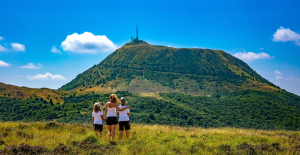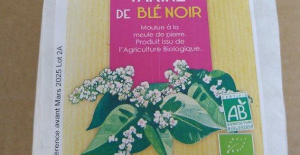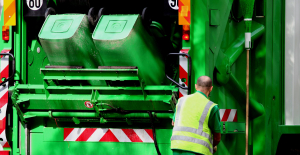"I brought you back from the Black Forest." Or: "Imported directly from Lübeck!" Black Forest ham and Lübeck marzipan are definitely nice souvenirs. But anyone who thinks that it is always a 100% original specialty from the region they have traveled to is often wrong. Edible souvenirs often don't contain what they say on the label.
The aforementioned and other regional specialties such as Thuringian bratwurst, Nuremberg gingerbread, Hessian apple wine, Dresden Christmas stollen or Westphalian pumpernickel are geographically protected. They bear the quality mark of the European Commission: Protected Geographical Indication (PGI).
But says PGI only that at least one production step takes place in the specified area, such as the production of the ham including curing, seasoning, smoking and dry storage for maturing. But: "The label is mostly silent about the origin of the raw material", criticizes the Federal Association of Consumers in Berlin. Black Forest ham can also come from Danish pigs.
If you want to be on the safe side and want guaranteed regional quality through and through, you have to look out for the EU’s PDO seal – it stands for a protected designation of origin. This means that all production steps must take place in the relevant region - from production to the end product. Around 2000 specialties are PDO-protected across Europe, in Germany there are currently 31 - mainly wine and cheese. We present four of them.
The smell of this southern German cheese is so intense that it is said to have put the Prussians to flight during the German Civil War. According to a popular anecdote. However, the war was fought in 1866 - a royal patent for the stinky cheese specialty is only documented for the year 1876. Did they exist before? One can only guess.
In the meantime, the Allgäuer Weißlacker, a semi-hard semi-hard cheese, had almost fallen into oblivion. But since 2015, its popularity has been boosted: that year its name was registered as a protected designation of origin in the register of the European Union. According to the EU Official Journal, the stinking original only comes from the district of Ravensburg, the Lake Constance district or the administrative district of Swabia.
Lovers of the cheese with the whitish, varnish-like smear say that Käsespätzle would not be complete without it. Other types of cheese are out of the question for them. The spicy-hot and salty Weißlacker also tastes good with bread and butter, pretzels and beer or is served with Schübling, an Allgäu bockwurst. It is also used to make vinaigrettes.
The fact that the Allgäuer Weißlacker exists at all is due to a coincidence: the brothers Josef and Anton Kramer from Wertach in Oberallgäu are considered to be the inventors. They were looking for a long-lasting cheese, but in their experiments they forgot a piece that would last a year in a dark room. Apparently to his advantage.
Today only very few cheese dairies produce the rindless semi-hard cheese. Milk from cows that graze on alpine pastures is used. Placed in the salt bath, the cheese can stay warm for a week. It is regularly brushed with salt and then stored in a cool place; in twelve to 15 months it then reaches its interesting taste and smell maturity. The stinking souvenir is available at the Käserei Stich in Ruderatshofen (kaeserei-stich.de) or at the Allgäuer Hof-Milch GmbH in Missen-Wilhams (hof-milch.de).
Roam through one of the most beautiful regions of Germany 365 days a year? What sounds like a dream life for hiking fans is the everyday life of a horned creature with long, gray hair: the Lüneburg Heidschnucke.
Herds of sheep roam the undulating landscape in north-eastern Lower Saxony, munching and bleating. In doing so, they kill two birds with one stone: they get fed and work as landscapers on the side. Because they chew the saplings of pine or birch and make sure that the Lüneburg Heath does not overgrow with bushes and trees. The heather plants can breathe and bloom.
In the region, hikes and bicycle tours to herds of Heidschnucken are offered, you can visit farms and stables to drive in and out and watch the undemanding animals.
Their meat is also popular: thanks to the fresh air, lots of exercise and the special diet, which also includes wild herbs, the Heidschnucke meat, which is protected with the PDO seal of origin, is low in fat, tender and aromatic. It is processed into sausages, meatballs, sausage, ham or canned sausage. A fine souvenir, and of course there is no Heidschnuckenbraten on the menu in any restaurant.
Vacationers help the shepherds by buying the meat, because this is the only way to make sheep farming profitable. This in turn helps the Lüneburg Heath - because without the hungry Heidschnucke sheep the cultural landscape would not exist.
The somewhat unwieldy name describes a hop variety from which a smooth beer is made. It is characterized by a "particularly intense and fine hop aroma" - flowery, fruity and spicy at the same time. This is how the corresponding Official Journal of the European Union describes it.
In 2012, the EU provided Spalt Spalt with the “protected indication of origin” quality mark: Only hops from the hills around the Middle Franconian town of Spalt south of Nuremberg may call themselves Spalt Spalt.
According to the local beer museum in the city's historic granary, the growing area, which is spoiled with 1,700 hours of sunshine, was still the largest hops region in Germany at the beginning of the 19th century, but has since been surpassed by the Hallertau.
But there is one record that cannot be shaken: hops have been grown in the area for over 1000 years. This makes it the oldest hop-growing region in Germany. It is written in black and white in the official gazette: "Hops from the town of Spalt bear the oldest seal of quality in the world."
Brews are prepared on site in Germany's only municipally run brewery, which is owned jointly by all of the city's 5,000 or so citizens. The spalt mayor is always the managing director of the city brewery. There, master brewer Uwe Schulz composes 21 beer specialties - with malt from the region, our own spring water and, of course, Spalt aromatic hops.
How exactly the protected seals are treated can be read in the EU regulation on the region of origin of the Stromberger plum: "The district of Stromberg in the municipality of Oelde plus a zone of 500 meters width running around the boundary of the district. This 500 meter wide zone includes small parts of the communities of Wadersloh (Warendorf district), Langenberg (Gütersloh district) and Rheda-Wiedenbrück (Gütersloh district). So far, so picky. Plums from trees that grow 600 meters away, for example, are not allowed to adorn themselves with the EU PDO seal.
In 2013, the Stromberger plum was given the status of a protected designation of origin, although it was not originally native to the Münsterland. Ludwig Niedieck, an official clerk and traveler, brought the variety to the region from southern France around 1790. They were planted on the southern slopes of Castle Hill. The stock is said to have doubled to 30,000 trees within three decades "because of the unique climatic and site or soil conditions", the Stromberger Plaume Protection Association outlines the story.
Today, around 15,000 Stromberger plum trees thrive on the sheltering hillside of the Münsterland Bay, and around 650 tons of these super fruits are harvested every year from the beginning of September. The starting signal is traditionally given by a public hike, eleven kilometers long. It can be tasted directly.
Due to its sweetness and fine acidity, the plum tastes delicious straight from the tree. Thanks to its high sugar content and easy-to-remove stone, it is also ideal for cooking, baking, drying or firing. The annual Stromberg plum market shows how the fruit fires the imagination: Here you can find the noble fruit processed into bratwurst, mustard, bread, cake, juice, liqueur, jam, mush, ice cream or chutney.
While the market does not take place again until late summer, a visit to the area in the 500-metre strip is worthwhile as early as April: That is when the trees, which once came from southern France, are in full bloom.
With the new EU regulation, crickets and grain mold beetles may be processed in food in the future. WELT reporter Paul Klinzing takes a closer look at the little animals at the "Green Week" in Berlin - and tries them right away.
Source: WELT/ Paul Klinzing

 Poland, big winner of European enlargement
Poland, big winner of European enlargement In Israel, step-by-step negotiations for a ceasefire in the Gaza Strip
In Israel, step-by-step negotiations for a ceasefire in the Gaza Strip BBVA ADRs fall almost 2% on Wall Street
BBVA ADRs fall almost 2% on Wall Street Ukraine has lost 10 million inhabitants since 2001... and could lose as many by 2050
Ukraine has lost 10 million inhabitants since 2001... and could lose as many by 2050 Sánchez cancels his agenda and considers resigning: "I need to stop and reflect"
Sánchez cancels his agenda and considers resigning: "I need to stop and reflect" The Federal Committee of the PSOE interrupts the event to take to the streets with the militants
The Federal Committee of the PSOE interrupts the event to take to the streets with the militants Repsol: "We want to lead generative AI to guarantee its benefits and avoid risks"
Repsol: "We want to lead generative AI to guarantee its benefits and avoid risks" Osteoarthritis: an innovation to improve its management
Osteoarthritis: an innovation to improve its management Ukraine gets a spokesperson generated by artificial intelligence
Ukraine gets a spokesperson generated by artificial intelligence The French will take advantage of the May bridges to explore France
The French will take advantage of the May bridges to explore France Organic flour contaminated by a recalled toxic plant
Organic flour contaminated by a recalled toxic plant 2024 Olympics: Parisian garbage collectors have filed a strike notice
2024 Olympics: Parisian garbage collectors have filed a strike notice Death of Paul Auster: Actes Sud says he is “lucky” to have been his publisher in France
Death of Paul Auster: Actes Sud says he is “lucky” to have been his publisher in France Lang Lang, the most French of Chinese pianists
Lang Lang, the most French of Chinese pianists Author of the “New York Trilogy”, American novelist Paul Auster has died at the age of 77
Author of the “New York Trilogy”, American novelist Paul Auster has died at the age of 77 To the End of the World, The Stolen Painting, Border Line... Films to watch this week
To the End of the World, The Stolen Painting, Border Line... Films to watch this week Omoda 7, another Chinese car that could be manufactured in Spain
Omoda 7, another Chinese car that could be manufactured in Spain BYD chooses CA Auto Bank as financial partner in Spain
BYD chooses CA Auto Bank as financial partner in Spain Tesla and Baidu sign key agreement to boost development of autonomous driving
Tesla and Baidu sign key agreement to boost development of autonomous driving Skoda Kodiaq 2024: a 'beast' plug-in hybrid SUV
Skoda Kodiaq 2024: a 'beast' plug-in hybrid SUV The home mortgage firm rises 3.8% in February and the average interest moderates to 3.33%
The home mortgage firm rises 3.8% in February and the average interest moderates to 3.33% This is how housing prices have changed in Spain in the last decade
This is how housing prices have changed in Spain in the last decade The home mortgage firm drops 10% in January and interest soars to 3.46%
The home mortgage firm drops 10% in January and interest soars to 3.46% The jewel of the Rocío de Nagüeles urbanization: a dream villa in Marbella
The jewel of the Rocío de Nagüeles urbanization: a dream villa in Marbella Europeans: a senior official on the National Rally list
Europeans: a senior official on the National Rally list Blockade of Sciences Po: the right denounces a “drift”, the government charges the rebels
Blockade of Sciences Po: the right denounces a “drift”, the government charges the rebels Even on a mission for NATO, the Charles-de-Gaulle remains under French control, Lecornu responds to Mélenchon
Even on a mission for NATO, the Charles-de-Gaulle remains under French control, Lecornu responds to Mélenchon “Deadly Europe”, “economic decline”, immigration… What to remember from Emmanuel Macron’s speech at the Sorbonne
“Deadly Europe”, “economic decline”, immigration… What to remember from Emmanuel Macron’s speech at the Sorbonne These French cities that will boycott the World Cup in Qatar
These French cities that will boycott the World Cup in Qatar Top 14: Fijian hooker Narisia leaves Racing 92 and signs for Oyonnax
Top 14: Fijian hooker Narisia leaves Racing 92 and signs for Oyonnax Europa League: Jean-Louis Gasset is “wary” of Atalanta, an “atypical team”
Europa League: Jean-Louis Gasset is “wary” of Atalanta, an “atypical team” Europa League: “I don’t believe it…”, Gasset jokes about Aubameyang’s age
Europa League: “I don’t believe it…”, Gasset jokes about Aubameyang’s age Foot: Rupture of the cruciate ligaments for Sergino Dest (PSV), absent until 2025
Foot: Rupture of the cruciate ligaments for Sergino Dest (PSV), absent until 2025
















